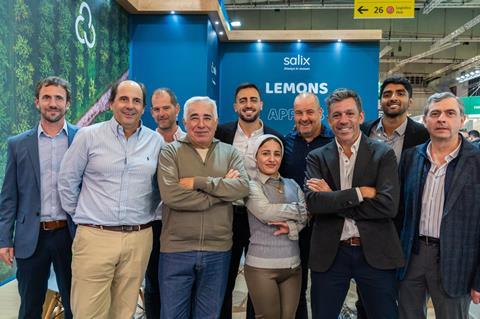Times may be tough for Argentina’s lemon sector, but Salix Fruits is seeing its own programme grow year after year

Excess offer and low profitability have led to a significant decline in lemon acreage in the Argentine province of Tucumán this year.
Against a backdrop of rising production costs and rapidly increasing global supply, a number of growers in the north-western province – home to around 90 per cent of the country’s lemon output – have been unable to adequately maintain their trees, while others have been forced to abandon their farms altogether.
Until a few years ago, Tucumán had 46,000ha of lemon production, but in the last four years around 15,000ha have been razed and another 12,000ha are in a state of abandonment.
According to government figures, Argentina produced 1.77m tonnes of lemons last year, down from 2.1m tonnes in 2022. The bulk of this (1.4m tonnes) went for processing, with another 200,000 tonnes sold on the domestic market.
Last year exports of fresh lemons totalled 220,060 tonnes and had a corresponding value of US$124m, down from 258,449 tonnes and US$160.8m in 2022. Around 55 per cent of this went to the European Union, with further 35 per cent being shipped to the US.
However, Argentina has seen its market share in Europe slide since the start of the decade due to strengthening competition from South Africa, Spain and Turkey, all of which have seen a notable increase in their planted area.
“The Argentine lemon industry has been in crisis in recent years due to a general lack of competitiveness,” says Alejandro Moralejo of Salix Fruits. “Its once dominant position in many markets is today under threat, despite the excellent quality of its offer.”
Dollar inflation has hit Argentina’s competitiveness hard, while the increase in ocean freight prices in 2021/22 significantly affected the profitability of Argentina along with other Southern Hemisphere suppliers.
“In addition to this, phytosanitary barriers generate greater difficulties and extra costs when it comes to accessing markets,” Moralejo says.
Plus, he points out, lemons are a very difficult product to promote as they are seen as more of a condiment, like garlic or parsley, rather than a fruit.
Argentina also faces a lot more competition in the Northern Hemisphere summer window. Spain, for example, has increased its production of Verna lemons, stretching its supply window well into the summer months.
“Turkey, despite the climatic problems it has experienced in recent years, is also growing and exporting more lemons, especially the Meyer variety, competing in the Russian and Eastern European markets, during the autumn window,” Moralejo says.
“Plus, Egypt and Morocco have begun to export fresh lemons, something that was unthinkable 25 years ago. This has led to the saturation of Middle Eastern markets, while Morocco also greatly influences the Canadian market.
In Asia, meanwhile, China dominates supply to its internal market and also ships to other countries in the region, as well as to Russia and the Middle East.
“South Africa has also seen a big increase in the production and export of fresh lemons in recent years. As well as playing a big role in supplying Asia and the Middle East, it competes very aggressively in Europe, Canada and Russia,” Moralejo explains.
Finally, Chile has carved out a very lucrative niche in premium price markets such as Japan and South Korea because its lemons are not required to undergo cold treatment. Chile also competes with Argentina in the US market.
The result, says Moralejo, is an oversupply of fresh lemons across all Northern Hemisphere markets for what is, in the end, a very price inelastic product.
Despite this gloomy backdrop, Salix Fruits has seen its own Argentine lemon programme grow steadily each year. The company is one of the biggest importers and distributors of this product in the US. From its offices and warehouses in Philadelphia, it supplies its retail, foodservice and wholesale customers with Argentinean lemons from the second week of May right through to the end of October.
“Our programme is growing every year, since in addition to our significant presence in the US, we also supply Europe, Canada, Russia and Asian countries such as the Philippines and China,” says Moralejo.



